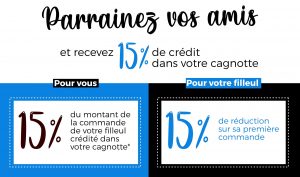How to calculate fiber attenuation?

Fiber Optic Chromatography Alignment
How to calculate fiber attenuation?
In fiber optic installations, measuring and accurately calculating the fiber link is a very important step in verifying network integrity and ensuring performance. Significant signal loss (i.e. fiber loss) can occur inside the fiber due to light absorption and scattering, affecting network reliability. optical transmission, how is fiber loss calculated?
When fibers are melted, it is also necessary to sort the fibers by chromatography.
What is the natural color of an optical fiber?
In general, optical fibers come in 12 colors: blue orange green gray white red black purple yellow pink lime green.
These colors are not the original color of the fiber, but the coloring of the fiber, the main purpose is to distinguish the fiber, and increase the tensile strength of the fiber, and the real fiber is silica as long as the raw material, its color is transparent.
Chromatographic arrangement of optical fiber
1, chromatographic sequence of fiber optic cable line of fiber optic chromatography
Chromatographic arrangement of optical fibers 1#-12#: generally blue, orange, green, brown, gray, white, red, black, yellow, purple, pink, lime green. If the fiber optic cable is smaller than 12D, it can be equipped with a single bundle, also called a center bundle;
Examples:
4 hearts:
4 hearts are blue, orange, green and brown
12 wires:
Blue, orange, green, brown, gray, white, red, black, yellow, purple, pink, green.
With a bundle. 16 mandrels: “Blue/orange/green/brown” x blue “Blue/orange/green/brown” x orange “Blue/orange/green/brown” x green “Blue/orange/green/brown” x brown
Rear cluster tube colors. 24 mandrels: “Blue/orange/green/brown/gray/white” x blue “Blue/orange/green/brown/gray/white” x orange “Blue/orange/green/brown/gray/white” x green “Blue /orange/green/brown/gray/white” x brown.
Tracking the color of the beam tube. Some fiber optic cables are naturally colored, following the “red head/green tail” principle, with the largest wires fused first, followed by the smallest.
If this is a new project, just have the same color spectrum on both sides of the end. If it is maintenance in cutting or repair, you need to understand how the original construction staff is connected that you follow how to connect (including each beam inside the core chromatography) .
The fiber loss standard
The Telecommunications Industry Alliance (TIA) and Electronics Industry Alliance (EIA) collaborated to develop the EIA/TIA standard, which specifies performance and transmission requirements for fiber optic cables and connectors, and which is now widely accepted and used in the fiber optic industry. In practice, maximum attenuation is the attenuation coefficient of a fiber optic cable, measured in dB/km.
How to calculate the attenuation of the optical fiber?
To check whether the fiber optic link can work properly, calculate the fiber attenuation, power budget and power margin as follows.
1) Fiber attenuation calculation formula
In fiber optic cabling, it is often necessary to calculate the maximum loss on a line of a defined length. The formula for calculating fiber attenuation is as follows
Total link loss (LL) = optical cable attenuation + connector attenuation + fusion splice attenuation (if there are other components (such as attenuators), their attenuation values can be superimposed) .
Cable attenuation (dB) = maximum fiber attenuation factor (dB/km) x length (km)
Connector attenuation (dB) = number of connector pairs x connector loss (dB)
Fusion splice attenuation (dB) = number of fusion splices × fusion splice loss (dB)
As shown in the equation above, the total link loss is the maximum sum of the worst case variables within a fiber section. It is important to note that the total link loss thus calculated is only a hypothetical value, as it assumes possible values of component attenuation, meaning that the actual fiber attenuation depends on various factors and may be higher or lower.
2) The following practical example shows how to calculate the attenuation of a fiber.
A single-mode fiber is installed between two buildings over a distance of 10 km at 1310 nm. The fiber also has 2 ST connectors and 1 fusion splice head.
Cable Attenuation – According to the standard table above, the maximum attenuation value for outdoor single-mode fiber optic cable with wavelength 1310nm is 0,5dB/km, so the value d The cable attenuation is 0,5dB/km x 10km = 5dB.
Connector Attenuation – Since 2 ST connectors are used and the maximum loss of each ST connector is 0,75dB, the connector attenuation is 0,75dB x 2 = 1,5dB. In the actual calculation, the connector insertion loss can refer to the specification value provided by the supplier.
Fused Splice Attenuation – The TIA/EIA standard specifies a maximum loss of 0,3dB for fused splices, so the attenuation for fused splices is 0,3dB x 1 = 0,3dB.
This results in a total loss of 5dB + 1,5dB + 0,3dB = 6,8dB for the fiber link.
Power budget calculation
What is the impact of the link attenuation values mentioned above on the transmission of the entire link? It is necessary to mention here another closely related parameter: the power budget. This parameter is used to compare calculated link loss values to ensure that the correct equipment is installed and that the link will only operate correctly if the link loss values are within the power budget. The power budget (PB) is the difference between the receiver sensitivity (PR) and the fiber-coupled transmitter power (PT), i.e. PB = PT – PR. Assuming the average optical power of the transmitter is -15dBm and the sensitivity of the receiver is -28dBm, the power budget is -15dB – (-28dB) = 13dB.
Calculation of power margin
After calculating the link loss and power budget, it is necessary to calculate the power margin (PM), which is the power available after removing the link loss from the power budget, this is i.e. PM=PB-LL.
Let's take the example again of a 10km indoor single-mode fiber optic cable. From the calculation above, the power budget is 13 dB and the link loss is 6,8 dB, so the power margin is 13 dB – 6,8 dB = 6,2 dB . The value obtained by this calculation is greater than zero, which means that there is still sufficient transmission power in the link.










